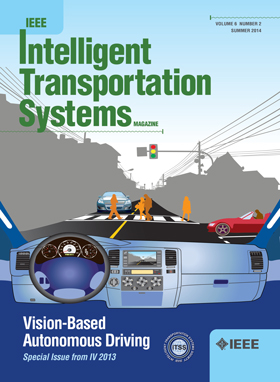Car Damage Detection Based on Multi-View Fusion and Alignment: Dataset and Method
IF 7.9
1区 工程技术
Q1 ENGINEERING, CIVIL
IEEE Transactions on Intelligent Transportation Systems
Pub Date : 2025-02-25
DOI:10.1109/TITS.2025.3542174
引用次数: 0
Abstract
Traffic accidents remain a significant concern due to their potential severity and impact on society. The rapid and accurate detection of car damage is increasingly crucial. Manual assessment of car damage usually relies on multi-view car images taken at the scene, which can provide richer information for damage assessment. However, most car damage algorithms are based on single-view datasets, and it is hard to fully leverage the complementary information and alignment information between distant view and close-up images. In this paper, we propose the Multi-View Car Damage Detection model (MVA-CDD), comprising three key modules: Feature Split (FS), Feature Fusion (FF), and Image Alignment (IA). The FS module extracts global and detailed information from distant-view and close-up images separately, which are then combined by the FF module. The IA module effectively aligns car damage information in distant-view and close-up images to correct errors and biases. Meanwhile, we created the new Car Damage Detection Multi-view dataset (CDDM), which has a significant advantage in both image quantity and diversity across categories, addressing the shortcomings of existing multi-view datasets. Our proposed MVA-CDD outperforms the state-of-the-art single-view and multi-view models with the dataset. Results from ablation studies further confirm the efficiency of MVA-CDD. This study contributes to optimizing the car damage detection and claims adjudication process, leading to significant labor and material cost savings. CDDM dataset is available at基于多视角融合与对齐的汽车损伤检测:数据集与方法
交通事故由于其潜在的严重性和对社会的影响,仍然是一个值得关注的问题。快速准确地检测汽车损伤变得越来越重要。人工评估汽车损伤通常依赖于现场拍摄的多视角汽车图像,这些图像可以为损伤评估提供更丰富的信息。然而,大多数汽车损伤算法都是基于单视图数据集,很难充分利用远视和近景图像之间的互补信息和对齐信息。本文提出了一种多视角汽车损伤检测模型(MVA-CDD),该模型包括三个关键模块:特征分割(FS)、特征融合(FF)和图像对齐(IA)。FS模块分别从远景和近景图像中提取全局和详细信息,然后由FF模块进行组合。IA模块可以有效地将汽车损伤信息在远距离和近距离图像中进行对齐,以纠正错误和偏差。同时,我们创建了新的汽车损伤检测多视图数据集(CDDM),该数据集在图像数量和跨类别多样性方面具有显著优势,解决了现有多视图数据集的缺点。我们提出的MVA-CDD在数据集上优于最先进的单视图和多视图模型。消融研究结果进一步证实了MVA-CDD的有效性。本研究有助于优化汽车损伤检测和索赔裁决流程,从而显著节省人工和材料成本。CDDM数据集可从https://github.com/SCUT-CCNL/CDDM获取。
本文章由计算机程序翻译,如有差异,请以英文原文为准。
求助全文
约1分钟内获得全文
求助全文
来源期刊

IEEE Transactions on Intelligent Transportation Systems
工程技术-工程:电子与电气
CiteScore
14.80
自引率
12.90%
发文量
1872
审稿时长
7.5 months
期刊介绍:
The theoretical, experimental and operational aspects of electrical and electronics engineering and information technologies as applied to Intelligent Transportation Systems (ITS). Intelligent Transportation Systems are defined as those systems utilizing synergistic technologies and systems engineering concepts to develop and improve transportation systems of all kinds. The scope of this interdisciplinary activity includes the promotion, consolidation and coordination of ITS technical activities among IEEE entities, and providing a focus for cooperative activities, both internally and externally.
 求助内容:
求助内容: 应助结果提醒方式:
应助结果提醒方式:


